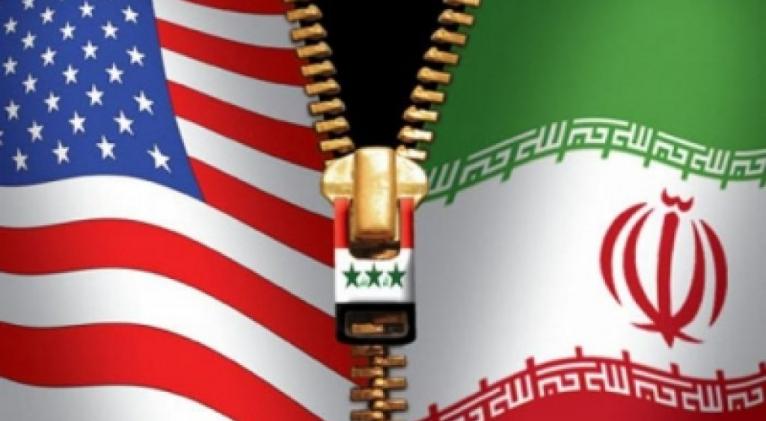Iran’s Multi-Front War against America and Its Allies
especiales

Two days before Thanksgiving, as President Donald Trump was preparing his surprise visit to U.S. troops in Afghanistan, Iranian foreign minister Javad Zarif phoned Palestinian Islamic Jihad (PIJ) leader Ziyad al-Nakhalah and met with a delegation from the Taliban. The object of both discussions was to pressure U.S. and its allies: Zarif told the Taliban representatives that Iran wants a full withdrawal of U.S. troops from Afghanistan, and offered al-Nakhalah Iran’s full support for PIJ’s “valiant resistance” against Israel.
Iran’s decisions to push the Palestinians to fight Israel and to encourage the Taliban are part of a regional policy that seeks to evict the U.S. from the Middle East and stir up trouble for Washington worldwide. This is Tehran’s answer to the “maximum pressure” campaign of economic sanctions that the Trump administration has mounted since pulling the U.S. out of President Obama’s Iran nuclear deal in May 2018.
Iran fought its multi-front war against the U.S. in multiple ways. In the Persian Gulf, it twice struck at foreign oil tankers over the summer, shot down a high-tech U.S. drone in late June, and launched drone and cruise-missile attacks on key Saudi oil facilities in September. It is also seeking to use its terrorist proxies in the Gaza Strip to provoke Israel into a wider regional war. In the fall of 2018, Israel accused Iran of ordering PIJ to attack from Gaza. The Palestinian terrorist group has thousands of missiles and fighters in Gaza, but is smaller than Hamas. Its leadership lives abroad and keeps in close contact with Iran, which supports it even though it’s made up of Palestinian Sunni Muslims. (In general, Iran tends to work with Shiite groups such as Hezbollah.) Israel was concerned throughout the summer of 2019 that PIJ might be trying to push it into a war in Gaza to distract it from Iran’s efforts to gain a permanent foothold in Syria and supply Hezbollah with precision-guided rockets. In response, Israel struck a PIJ commander on November 12, prompting the group to fire over 400 missiles over the Gaza border.
Evidence for how important the Palestinian group is to Iran comes from two phone calls that Zarif made after the November 12 battles. Iran’s Mehr News reported that Zarif congratulated al-Nakhalah on November 17. Then Zarif called again on November 25. Iran’s message was clear: Keep the pressure on Israel.
At the same time, Iran was also looking 1,900 miles away from the Gaza Strip, to Afghanistan. In the 1990s, Iran and the Taliban were on opposite sides of the war in Afghanistan, to the point where Iran almost invaded the country in 1998. Once the U.S. invaded to dislodge al-Qaeda after 9/11, Iran began to reconsider its antipathy toward the Taliban. The Islamic Republic now hopes to push the U.S. out of Afghanistan by whatever means are necessary and fill the resulting power vacuum. Secretary of State Mike Pompeo has accused Tehran of being behind a May suicide bombing in Kabul. Peace talks with the Taliban and the U.S. broke down in September, and Trump’s Thanksgiving visit notwithstanding, Iran believes the U.S. is leaving Kabul and hopes to hasten the process.
Israel Prepares For War With Iranian Proxies
As Iran works with PIJ and the Taliban, it also seeks to pressure the U.S. in the Gulf, in Iraq, in Syria, and in Lebanon. In Iraq, it hopes its allies in parliament and among various Shiite militias will force the U.S. to withdraw; militia mortar and rocket attacks have hit U.S. bases in the country every month since May. In Syria, Iran-backed militias allied with Bashar al-Assad’s regime are facing U.S. forces across the Euphrates, and would like to grab the oil facilities that the U.S. is currently protecting. In Lebanon, Iran’s proxy Hezbollah wants control over the choice of the country’s next prime minister.
The Iranian regime is facing maximum pressure from the U.S. and suddenly finds itself squeezed at home, too, forced to brutally crack down on massive recent protests against a large gas-price hike. Its response has been to challenge the U.S. and American allies across thousands of miles of terrain from Kabul to Gaza. While it is cornered, it should not be underestimated.













Add new comment